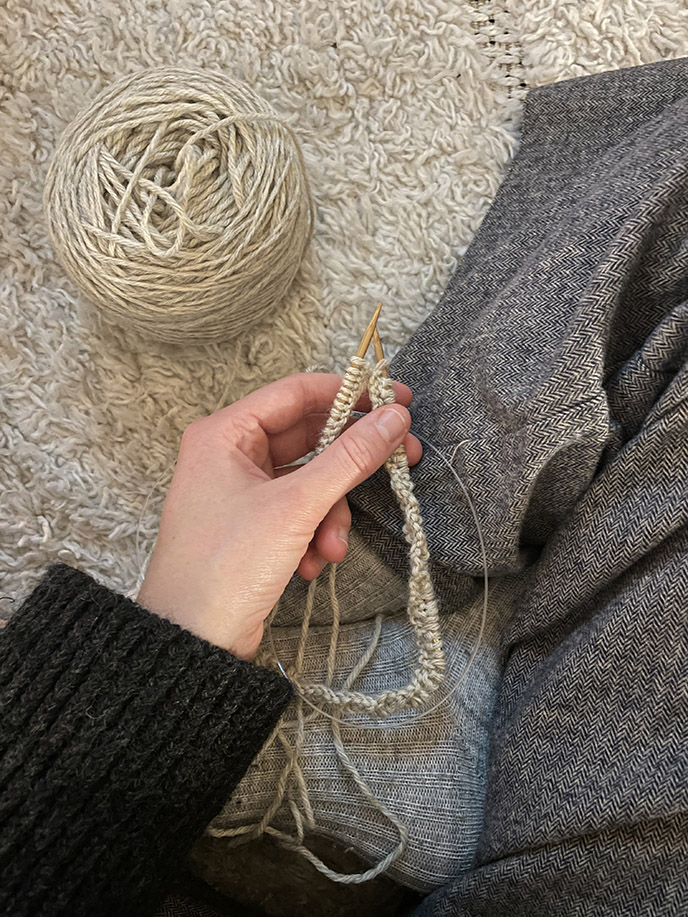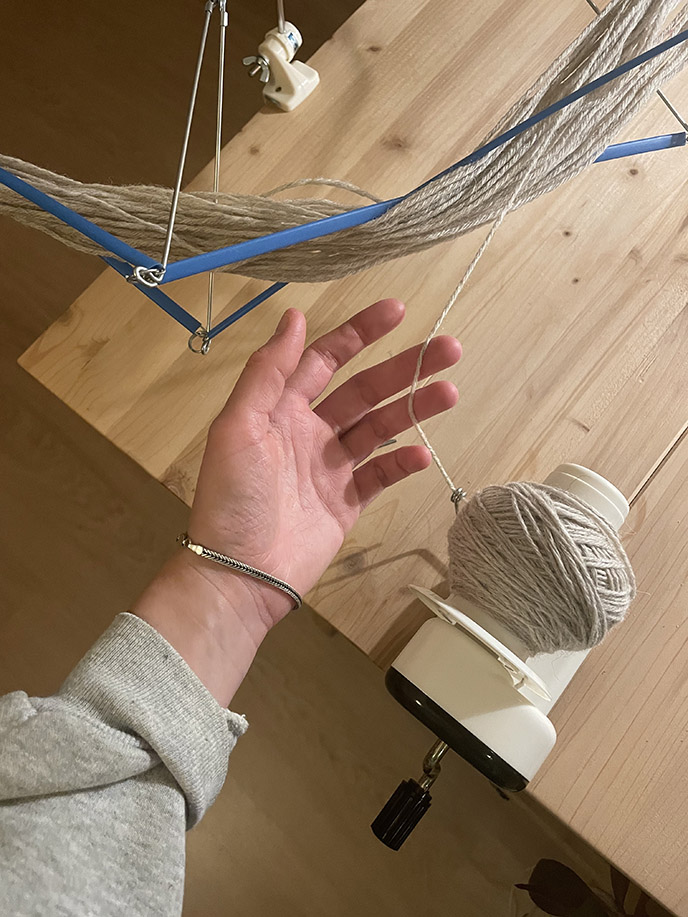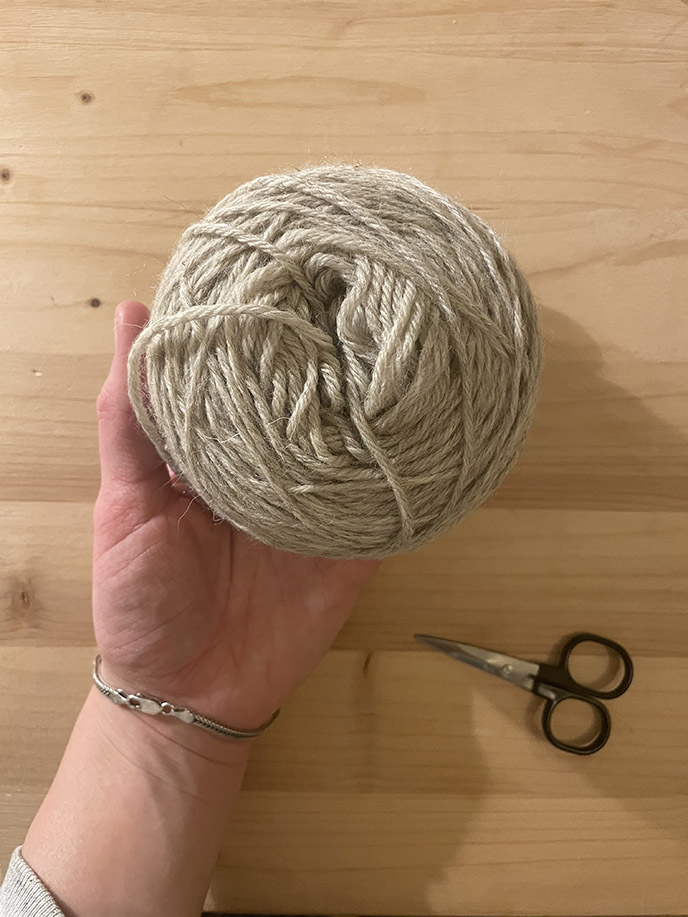Wednesday, 24 January 2024
Row's Outline Sweater
Upon completing the Wave Vest, I started another pattern crafted by the same maker. The construction of her pieces are really beautiful and I love the details that make it a bit more special. You knit the the jumper in two flat pieces that are then joined with a visible seam done on a crochet hook.

Casting on for the sweater
A project like this one requires a lot of wool, and picking what yarn to knit with is very important to me. Something that takes a significant amount of time to make needs to sit right on your body, and I want to know it came from a good place. I read this wonderful book a while ago titled: "Worn. A people's history of clothing" which essentially traces clothing and textiles over the world back to their origin and the people that craft the material. I think it can often be tempting to rely on notions of ‘globalisation’ to normalise the fiction that the object's origin are simply too complex to understand, but this book does a great job at demystifying the places, people and practices that are involved in making the clothes that we buy.
There was this one short paragraph that really struck me whilst reading, it said:
"Clothing signals place. Like pride in a local dish, local cloth had historically been used to display hometown identity. This "Wisconsin" t-shirt might serve the same function for its wearer, but it is also a product from South India. It has left its residues there. It has taken its debt from there in the form of water."
What interests me is the notion of debt that is used here. In Robin Wall Kimmerer’s book “Braiding Sweetgrass” I read a lot about reciprocal relations and how we must always give back if we take something, to have a fair and caring exchange. In the case of this jumper, the wool and its fabrication process, the designer, and me (the maker), what does that mean? And how can I make these various relationships and the making process in itself a reciprocal one?
I'll continue to ponder this question, and I hope I'll find an answer someday. I think I'd like to try and execute all the steps in the making of a jumper myself. Maybe it sounds silly but I'd like to get to know the animal whose wool I'm wearing and how to take care of them, I'd like to sheer a sheep, wash the wool, spin the yarn, knit the jumper and to get to know the people that are experts in these various fields of craft and do it for a living. In the meantime, whilst I continue to manifest this small dream on here and elsewhere, I have started knitting the Outline jumper with wool from a Yorkshire based company called Wooltrace. You can read all about them here, but in short they have created a fully traceable yarn that guarantees fair pay to farmers, ensures the welfare of their animals and supports sustainability within the British farming industry. You buy their yarn in hanks which means you have to wind them into balls or 'cakes' as I'd like to call them. Quite an enjoyable process.


Picture of the winding process, and the finished 'cake', side by side
Because of the big needle size you need to knit the jumper (5mm) it comes together really fast. I'm excited to love and wear it and to take pride in this thing I have made not just because I have done so, but also because the material came from a good place. I want the finished item to have a good and honest energy.